Pastry and Confectionery Pictorial - 1874
Pastry and Confectionery play a most important part in our daily food; their varied entremets, cakes, and petits-fours are valuable adjuncts to our family fare; their ornamental pieces and substantial pastries add brilliancy to the table of the wealthy.
The Pastry-cook's art is appreciated in all civilized lands, and its origin dates from the infancy of the world, namely, from the day when man having before him flour, butter, and eggs, must have been led to combine them in different ways to flatter the palate.
Hence cakes and brioche.
The Illustrations include the pastry proper, namely, the transformation of raw provisions into edible delicacies and treats of the larger pieces of pastry and of small entremets,
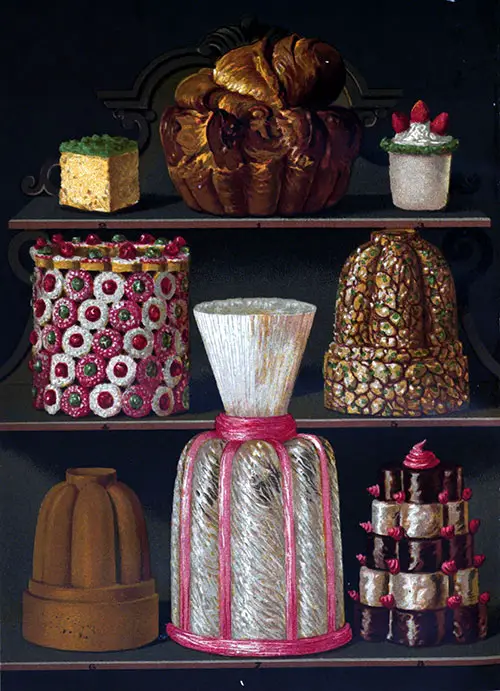
Pastry Items, Left to right; top to bottom: Brioche; Manqué; Almond Paste Timbale with Strawberries and Cream; Genoese Paste Croquembouche; Parisian Nougat; Sponge Cake; Spun Sugar Sultane; and Breton Cake.
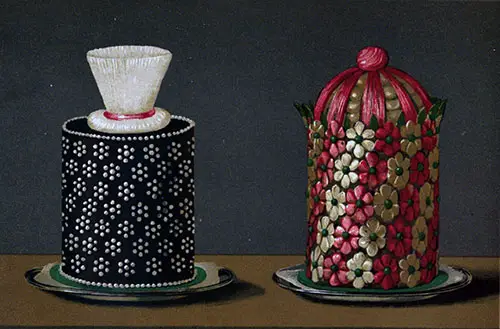
Sponge Cake Glazed a l’Italienne; and Croquembouche of Almonds and Pistachios
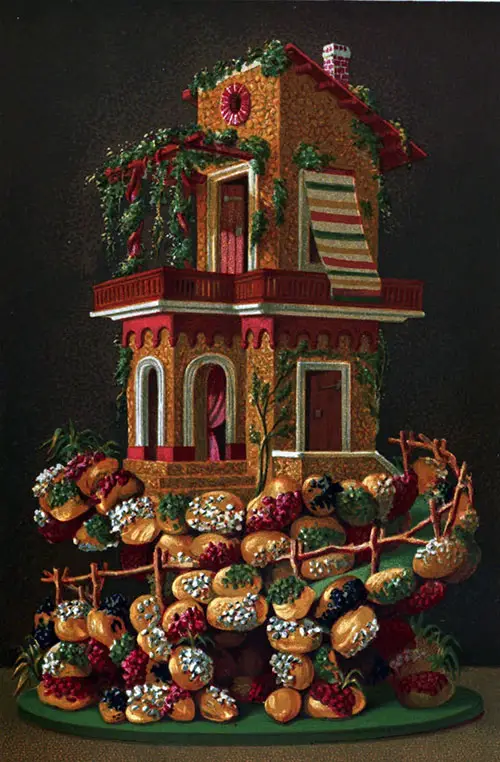
Italian Villa Made of Nougat
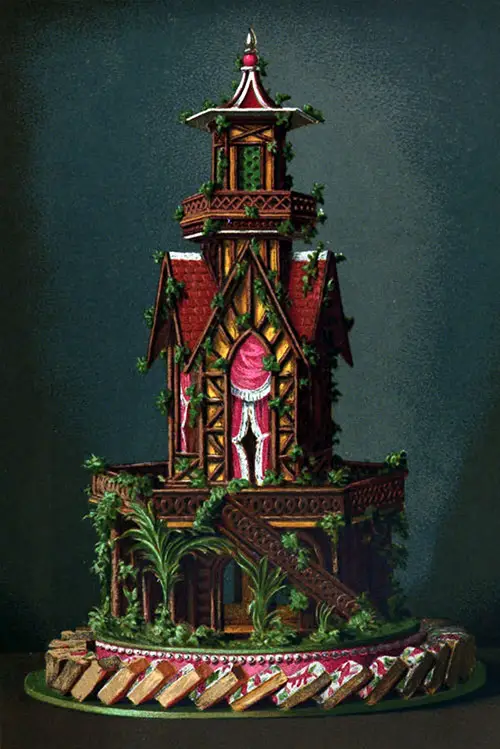
Rustic Summer House
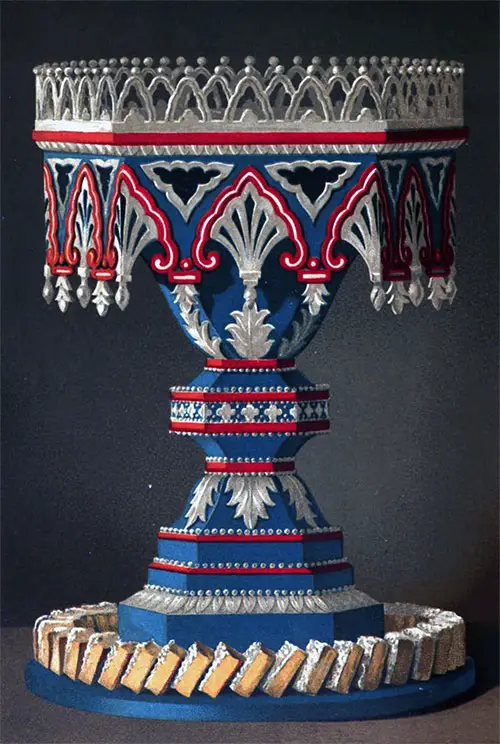
Moorish Stand
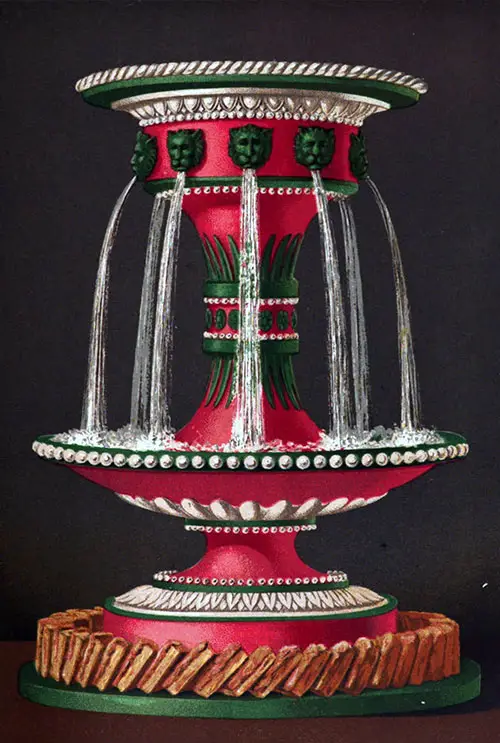
Fountain Stand
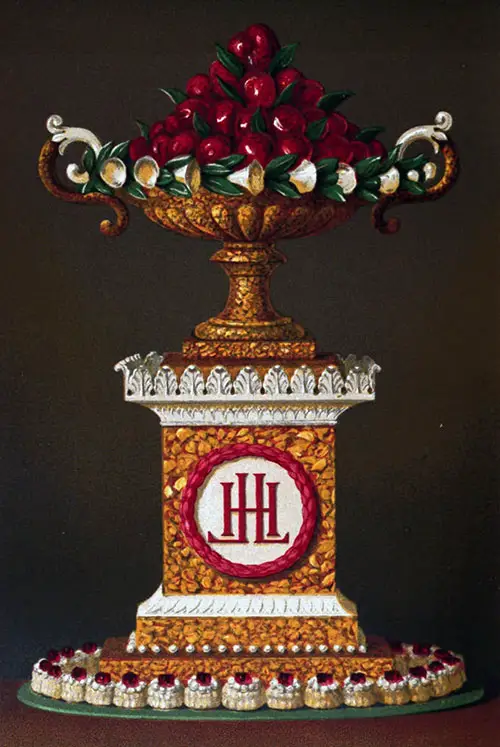
Nougat Vase Filled with Strawberries on Nougat Stand
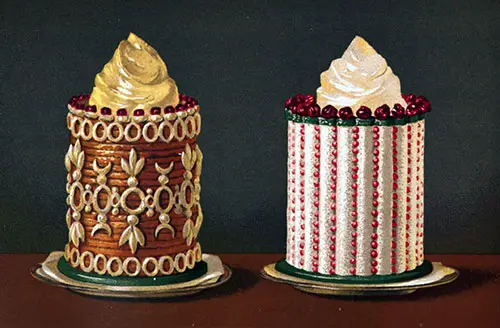
Neapolitan Timbale Filled with Ice Cream; and Almond Paste Timbale Filled with Iced Plombiere
Selected Illustrations from the Royal Book of Pastry and Confectionery (Ce Livre de Patisserie) by Jules Gouffé; Translated from the French and Adapted to English Use by Alphonse Gouffé. London: Sampson, Low, Marston, Low, & Searle, © 1874.
